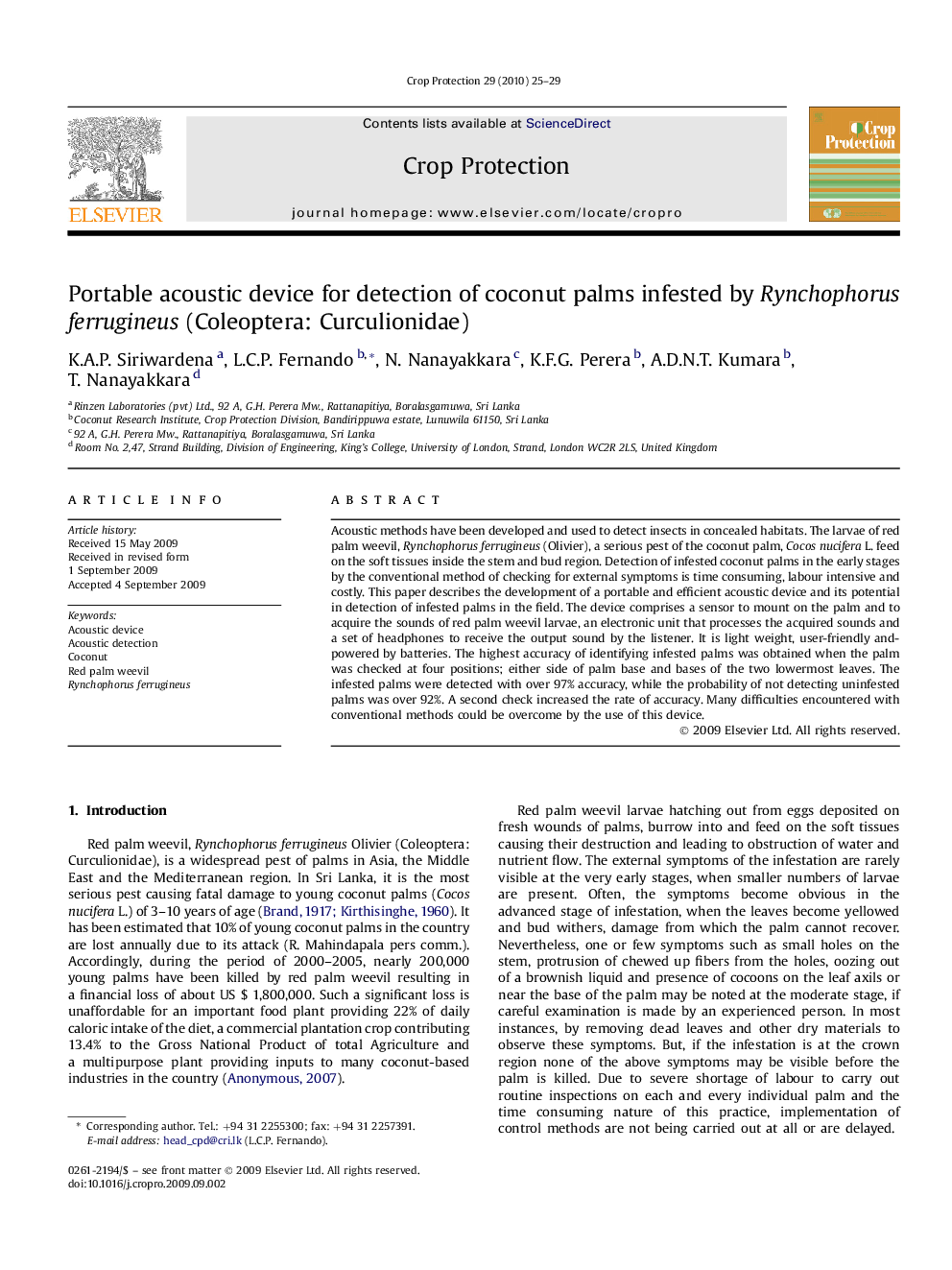| Article ID | Journal | Published Year | Pages | File Type |
|---|---|---|---|---|
| 4507082 | Crop Protection | 2010 | 5 Pages |
Abstract
Acoustic methods have been developed and used to detect insects in concealed habitats. The larvae of red palm weevil, Rynchophorus ferrugineus (Olivier), a serious pest of the coconut palm, Cocos nucifera L. feed on the soft tissues inside the stem and bud region. Detection of infested coconut palms in the early stages by the conventional method of checking for external symptoms is time consuming, labour intensive and costly. This paper describes the development of a portable and efficient acoustic device and its potential in detection of infested palms in the field. The device comprises a sensor to mount on the palm and to acquire the sounds of red palm weevil larvae, an electronic unit that processes the acquired sounds and a set of headphones to receive the output sound by the listener. It is light weight, user-friendly and powered by batteries. The highest accuracy of identifying infested palms was obtained when the palm was checked at four positions; either side of palm base and bases of the two lowermost leaves. The infested palms were detected with over 97% accuracy, while the probability of not detecting uninfested palms was over 92%. A second check increased the rate of accuracy. Many difficulties encountered with conventional methods could be overcome by the use of this device.
Related Topics
Life Sciences
Agricultural and Biological Sciences
Agronomy and Crop Science
Authors
K.A.P. Siriwardena, L.C.P. Fernando, N. Nanayakkara, K.F.G. Perera, A.D.N.T. Kumara, T. Nanayakkara,
